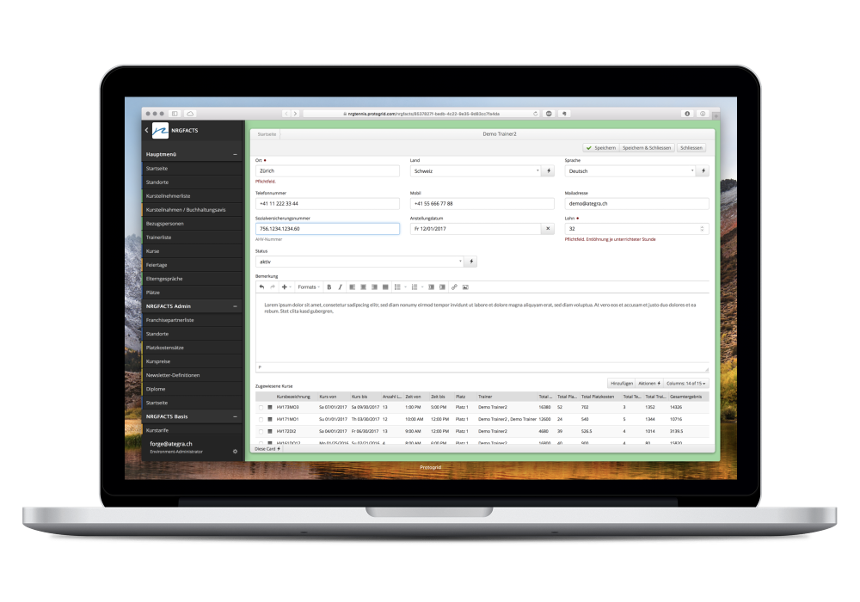
Low code pursues the following goals: Simple development, agile adaptation, mobile access, automatic software distribution and simple maintainability. These goals bring several advantages:
- Thanks to a simple development the costs decrease - not only because de development process is faster, but also, because mostly also the end users can contribute a part to the development.
- Thanks to agile adaptations, applications can be used more quickly and productively - if an unexpected additional requirement arises later or even the model changes, the application can simply be changed again afterwards.
- New workplace forms can be created through mobile access - for example, home office becomes possible, which in turn motivates your own employees and promotes their efficiency.
- The internal IT is relieved by means of automatic software distribution - new resources become available and strategic projects can be tackled.
- The simple maintainability reduces the operating costs ("total cost of ownership") and extends the operating time ("application life cycle") - since a low-code application no longer consists of several thousand lines of code, a quick familiarization is possible at any time and the application can be easily maintained over many years.

If one now converts these function points into person months for a conventional Java development, one receives 18.8 months, i.e. about 500,000 Swiss francs. The project actually implemented with Protogrid came to 2.6 person months or 70,000 Swiss francs thanks to low code. This corresponds to just 14% of Java development!
But are such investments really worthwhile in the end? Just because something is fast and cheap now doesn't mean you have to buy everything, does it? In another development project with Protogrid, we did a return on investment analysis. The aim was to optimise the order workflow in sales. The assumption was that 50 users would process 5 cases per day, which would save you 5 minutes per case with the new solution. These 5 minutes per case are even very tightly calculated: Here an address from the address directory search, there a Mail search, then finding the current version of a flyer, etc.
However, all these small savings add up to 5208 hours per year. With a value added per employee and hour of 50 Swiss francs, this would correspond to about 260,400 Swiss francs. After deduction of operating costs, there is still a considerable net profit of CHF 257,777. Amazing how productivity can only be increased by introducing a small, useful application, isn't it? With a low-code typical development price of CHF 7,737, the ROI is 0.03 years, i.e. 0.36 months, or less than 11 days. After less than 2 weeks, the investment has already amortized and you start saving. Do you remember what they worked on the week before last?
Are you interested and would like to know which savings are possible with low-code in your company? Then contact us today and we will analyze the potential together.


